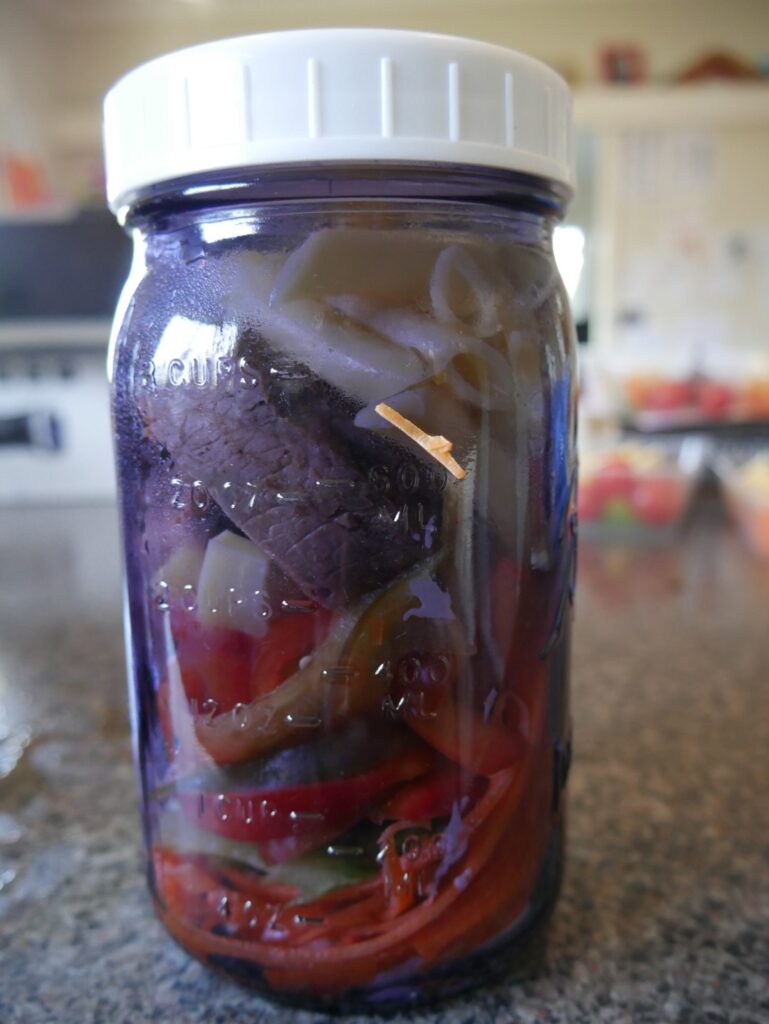Since we have a “No Junk Mail” sticker on our mailbox – we’re deprived of the weekly “Aldi Specials” catalogue.
On the downside – we miss all the Aldi deals of items we didn’t think we would ever need.
On the plus side; when we do venture into Aldi – there is always a nice surprise to find what ludicrous bargains await us.
Recently there was a “Women’s Weekly Complete Slow Cooker Recipe” that I impulse bought for the tempting price of $20.
The recipes are inspirational; but not really refined. Most of them follow the formula of; “Bung everything into a slow cooker & cook for eight hours.”
So as a challenge and a learning and teaching exercise; my wife picked out a recipe and keeping to the original ingredient list – I tried to bring out the best in the recipe.
Our base recipe #69: "Beef and Vegetable Soup"
Ingredients
- 1kg Gravy beef – trimmed and cut into 2.5cm pieces
- 1 garlic clove, crushed
- 1 medium brown onion cut into 1cm pieces
- 2 stalks of celery, trimmed, cut into 1cm pieces
- 2 medium carrots, cut into 1cm pieces
- 2 medium potatoes, cut into 1cm pieces
- 400g canned diced tomatoes
- 1L water
- 2 cups of beef stock
- 2 dried lay leaves
- 1 cup of frozen peas
- 1/3 cup coarsely chopped flat leave parsley
Method
- Combine beef, garlic, onion, celery, carrot, potato, tomatoes, the water, stock and bay leaves in a 5-litre slow cooker. Cook, covered on low, about 9 hours.
- Add peas to cooker, cook, covered, a further 30 minutes.
- Discard bay leaves. Season to taste.
- Serve soup sprinkled with parsley.
Improving the recipe
There are three opportunities to add additional flavour to the recipe:
- Browning the meat
- Caramelising the onions
- Managing the cooking time of the other vegetables.
Browning the beef
This is the most obvious improvement; browning the meat before adding to the slow cooker. Many slow cooker recipes call for the browning meat step; the Maillard reaction adds extra depth of flavour to the beef and the wider dish.

So with care I browned the beef cubes in batches well in a fry pan over medium/medium-high heat. Leave the burnt caramel bits in the bottom; we will use that for later.
Tackling the Onions
The onions are another chance to enrich the flavour of the soup. Taking a cue from “French onion” soup; the idea is to slowly cook the onions to a rich caramel onion flavour.
Slice the onions thinly and then slowly brown them in the pan on a low heat.
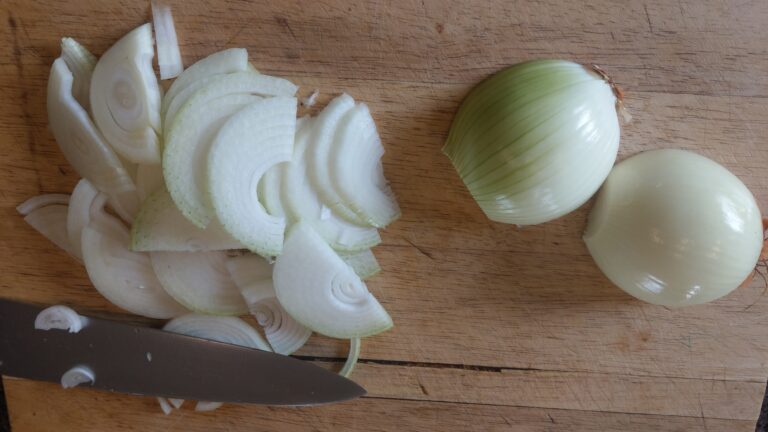

Stir around to lift off any brown bits from the bottom to start forming a beef fond with the sweating of the onions and keep slowly cooking until it is a deep rich brown colour.
If the onions start to stick and threaten to burn; add a bit of water to loosen them off the bottom of the pan.

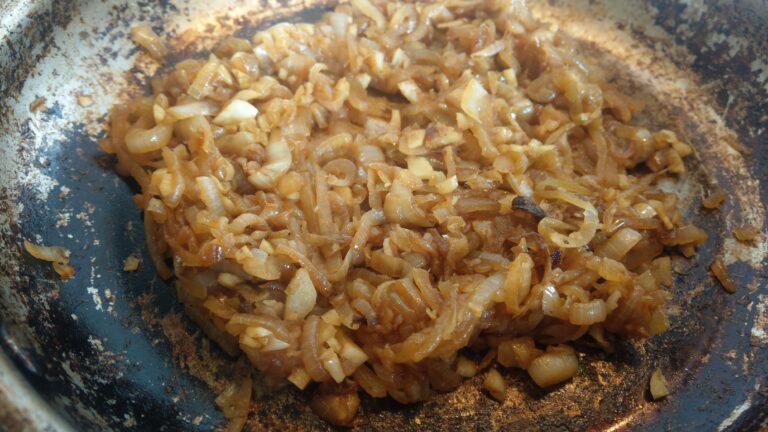
When the onions are almost done; add in the minced garlic and cook the raw edge off the garlic.
Add the caramel onion and garlic mixture to the slow cooker pot and then de-glaze the pan with a cup of beef stock.
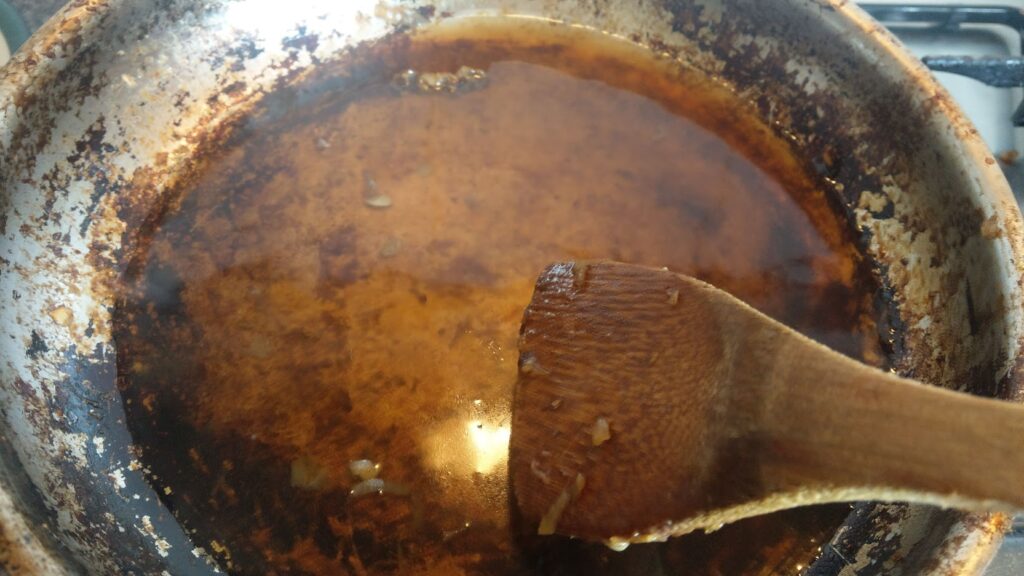
Sacrificial stock vegetables
To preserve the texture of the carrots, celery and potatoes for the end and not cook the vegetables to a pulp; we’re going to use half of the carrots and celery as “sacrificial vegetables” to flavour the soup and then remove at the end; the same when making a stock.

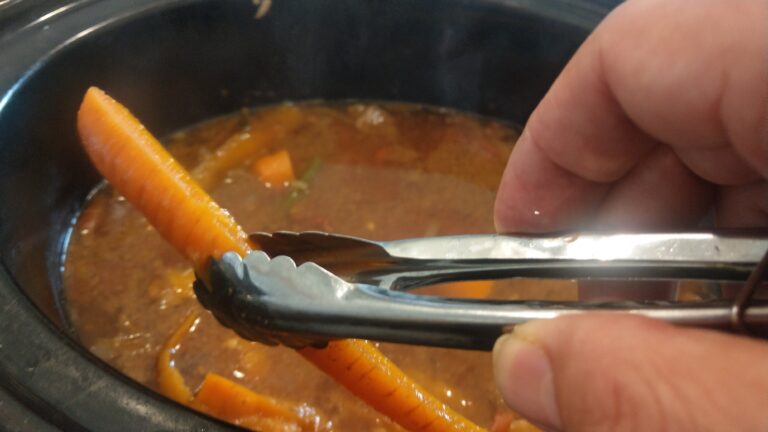
You could when the cooking time is almost over; remove the cooked beef and blend the pulpy vegetables with a stick blender.
But this time I decided to give our worm farms a treat with cooked carrots and celery.

At the end – add freshly cubed potatoes, cook for 10min and then add cubed celery and carrots.
Cook until the vegetables are just cooked through – or until personal preference.
Add the peas right at the end to warm through.
In the end - is it worth it?

The soup was robust, tasty and put a smile on the family’s face.
But how much tastier than the base recipe – I couldn’t say. I should have cooked the original recipe as a control; but couldn’t bring myself to throw beef into a slow cooker that hasn’t been browned.
One thing that was a standout was the time it took to prepare. If preparing the original recipe; it could have been done within ten minutes.
And that’s one of the key advantages of a slow cooker – throw ingredients quickly into a pot, let it run through the day and you have a tasty comforting meal in the evening time with little effort.
With my browning the meat in batches, the sweating and caramelising the onions; all of a sudden that 10min prep ballooned out to an hour.
Is that extra 50min worth the extra taste; worth the time and effort invested?
I’ll leave it up to you dear readers to cook the recipe and find out yourself.










